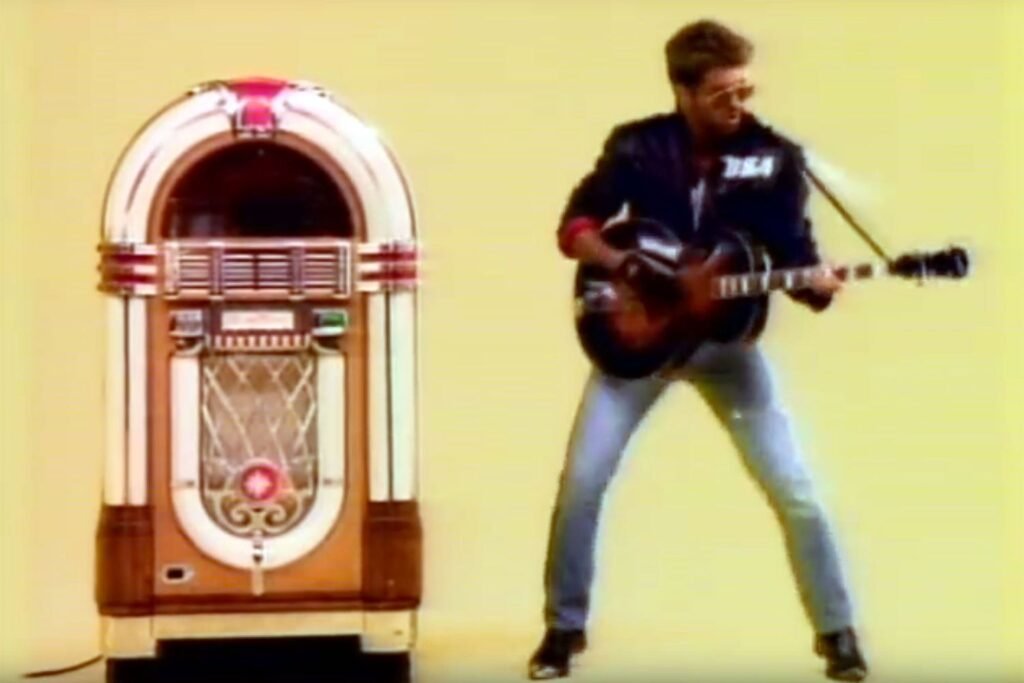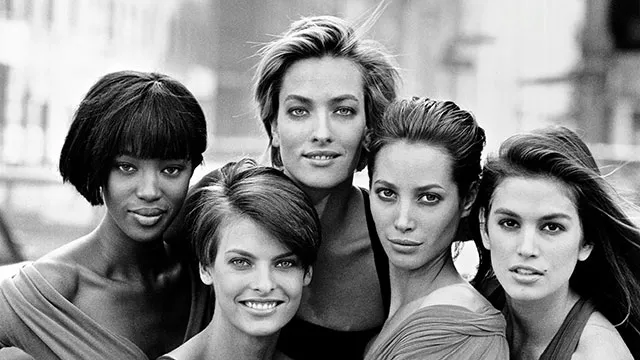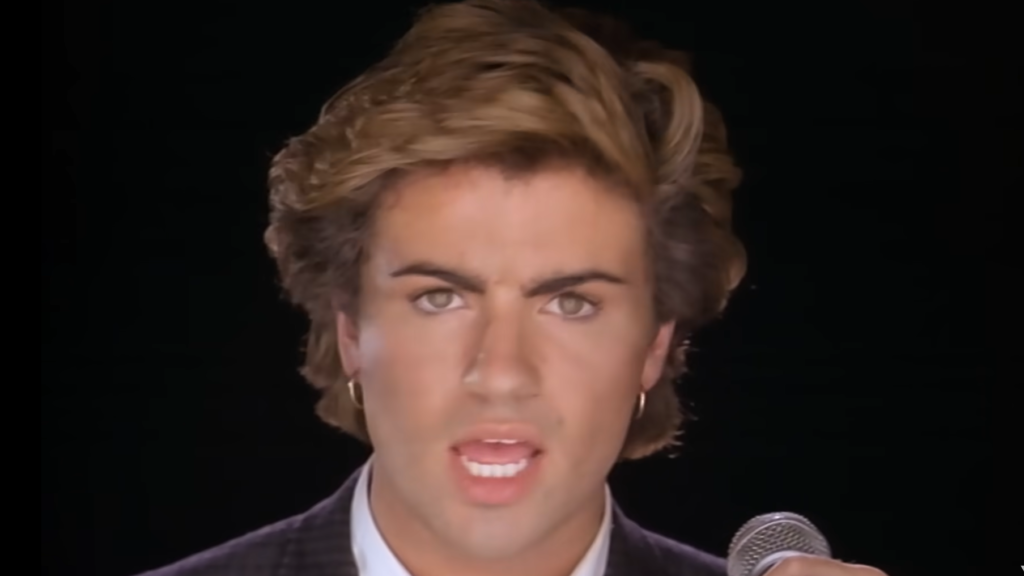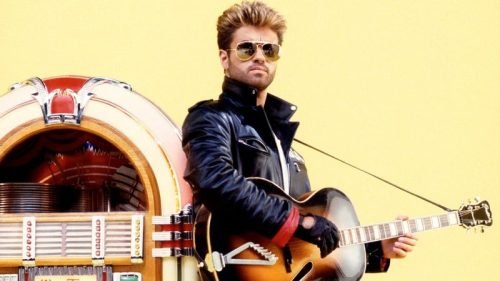George Michael, a name synonymous with the evolution of pop music in the 1980s and beyond, remains one of the most charismatic and influential figures in the music industry. Born as Georgios Kyriacos Panayiotou, he rose to fame as part of the duo Wham! before forging an even more successful career as a solo artist. His distinctive voice, coupled with his knack for crafting melodically rich pop songs, allowed him to dominate the charts with hits like “Careless Whisper” and “Faith.”
Beyond his musical prowess, George Michael was a visionary in the realm of visual media, using music videos not just as promotional tools but as a form of artistic expression. At a time when MTV was shaping the music landscape, his videos became cultural milestones, known for their aesthetic appeal, thematic depth, and often, their provocative nature. These visual pieces not only complemented his music but also amplified his status as a style icon and a trendsetter in the visual arts.
His ability to merge visual storytelling with musical innovation made each of his videos a unique narrative experience, enhancing the emotional resonance of his songs and deepening his connection with audiences worldwide. George Michael’s contributions have left a lasting imprint on both the music and video industries, securing his legacy as a true pop icon.
Early Career: Wham! Era

Breakthrough Videos
In the early 1980s, George Michael, along with his bandmate Andrew Ridgeley, formed the duo Wham!, which soon became synonymous with the vibrant energy of the era’s pop scene. Their music videos, filled with youthful exuberance and a palpable sense of fun, played a crucial role in defining the band’s image and their resonance within pop culture.
The video for “Wake Me Up Before You Go-Go” is a quintessential example of Wham!’s impact on the music video medium. With its bright, neon-lit aesthetics and energetic dance sequences, the video captures the spirit of carefree joy that defined much of the 80s pop culture. Its iconic white “Choose Life” T-shirts became fashion statements overnight, illustrating how music videos could set trends far beyond the music itself.
“Last Christmas,” another monumental video, offers a contrasting mood with its wintery, festive setting and a storyline centered around a poignant tale of love and heartbreak. This video showcased a different facet of Wham!’s artistic expression, emphasizing emotional depth without sacrificing the visual appeal that made their videos so engaging. The scenic snow-covered landscapes and cozy winter fashion added a timeless quality to the video, making it a perennial holiday favorite.
Visual and Musical Style
The visual and musical style of Wham! during this era was marked by a bold, colorful aesthetic that mirrored the optimistic spirit of the early 1980s. Their videos featured vibrant colors, fashionable attire, and lively choreography, which not only highlighted the duo’s dynamic performances but also set the stage for many of the decade’s music video trends.
Musically, Wham! struck a balance between upbeat dance tracks and smooth romantic ballads, both of which were complemented by their visual representations. The use of narrative elements in videos like “Last Christmas” added a layer of storytelling that was less common in the dance-heavy clips of their peers, showcasing George Michael’s flair for fusing visual media with complex emotional narratives.
In this formative period of his career, George Michael’s work with Wham! laid the groundwork for his later solo achievements, establishing him as a pioneer in integrating music with compelling visual storytelling, setting a benchmark for what pop videos could achieve in the MTV era.
Solo Stardom: The Faith Era

Introduction to Solo Videos
As George Michael transitioned from the bubblegum pop sensibility of Wham! to a more mature solo career, his artistic vision expanded significantly, marking a pivotal shift in his approach to both music and music videos. The release of “Faith” as a single and its accompanying video served as the perfect manifesto for this new phase. The video, with George in a now-iconic leather jacket, aviator sunglasses, and the unforgettable jukebox scene, is steeped in a rockabilly revival style that distinguished it sharply from his previous work.
This video not only showcased his evolution as an artist but also solidified his status as a solo superstar. The visual simplicity of the “Faith” video, featuring just George and his guitar, focused attention on his musicianship and charismatic performance, making it one of the most memorable music videos of the era.
Evolution of Style
With his solo career, George Michael’s music videos grew in narrative complexity, symbolism, and technical sophistication. This evolution is evident in the videos for songs like “Father Figure” and “One More Try,” where he explored themes of love, longing, and vulnerability. The “Father Figure” video, for instance, presents a cinematic narrative featuring George as a cab driver in a mysterious, almost noir-like tale of romance and complexity. The use of lighting and shadow, along with close-ups and mid-shots, creates an intimate yet ambiguous atmosphere that complements the song’s lyrical depth.
In “One More Try,” the video takes a more minimalist approach, focusing on George’s emotive performance in a classroom setting that symbolizes the lessons learned from painful experiences. The sparse setting allows the lyrics and his vocal delivery to take center stage, utilizing simple yet powerful imagery to convey the song’s emotional weight.
Major Hits
Other significant videos from the “Faith” album include those for “Monkey” and “Kissing a Fool.” “Monkey” features a more dynamic, dance-oriented visual, reflecting the song’s urgent rhythms and its themes of battling inner demons. The energetic choreography and rapid editing pace contrast with the more introspective videos, showcasing George’s versatility as a performer.
“Kissing a Fool” is presented with a classic, timeless aesthetic, reminiscent of old Hollywood glamour. The video’s use of a simple, elegant piano bar scene complements the song’s smooth jazz influences, focusing on George’s vocal prowess and stylistic sophistication. This approach not only highlighted his ability to cross musical genres but also emphasized his role as a serious musician and an artistic innovator.
Exploration and Experimentation: Listen Without Prejudice and Older

Artistic Shifts
During the early 1990s, George Michael’s album “Listen Without Prejudice, Vol. 1” marked a significant departure from the upbeat pop and dance-oriented sounds of his “Faith” era. This period in his career was characterized by a more introspective and contemplative approach, both musically and visually. The music videos from this album, particularly for “Freedom! ’90” and “Praying for Time,” exemplify this shift towards a deeper, more reflective style.
“Freedom! ’90” is one of George Michael’s most iconic videos, notable for its absence of the singer himself. Instead, it features supermodels lip-syncing to his vocals, a symbolic gesture that critiqued the superficiality of fame and the music industry’s commodification of artists. The video’s rich imagery, including exploding guitars and jukeboxes, serves as a metaphor for breaking away from his past persona. This self-aware, introspective approach was groundbreaking, reflecting a matured artist who was willing to use his platform to challenge industry norms and express his personal struggles.
“Praying for Time” employs a starkly minimalistic approach, with the lyrics presented over a dark, slowly moving background. This method focuses the viewer’s attention squarely on the song’s poignant messages about social injustice and temporal decay. The simplicity of the video amplifies the song’s solemn tone and its critique of materialism and societal issues, showcasing George Michael’s growth into a socially conscious artist.
Mature Themes
The “Older” album further explored mature, introspective themes, with its videos reflecting George Michael’s evolution into an artist who deeply pondered love, loss, and the human condition. The video for “Jesus to a Child” is a poignant tribute to his late partner, Anselmo Feleppa. The video’s subdued color palette and gentle visual motifs create a somber, reflective atmosphere, mirroring the song’s themes of mourning and spiritual reflection. This artistic choice highlights a personal vulnerability rarely seen in pop music videos at the time.
“Fastlove,” another hit from the “Older” album, offers a sleek, modern aesthetic that contrasts with the album’s otherwise somber tone. The video’s vibrant nightclub scenes interspersed with introspective moments capture the complexities of seeking solace and connection in fleeting experiences. This duality in the video mirrors the lyrical content, which juxtaposes the desire for immediate gratification with a deep-seated longing for lasting companionship and love.
Through the “Listen Without Prejudice” and “Older” albums, George Michael not only shifted his musical and visual style but also delved into themes that many artists shy away from. His videos from these periods are marked by a courageous exploration of personal and societal issues, employing a range of visual techniques to communicate complex emotional landscapes. This era solidified his status as an artist committed to authenticity and depth, using his music videos as a canvas to express his most profound reflections on life and society.
Later Years and Legacy

Lasting Impact
In the later years of his career, George Michael continued to innovate and push the boundaries of music video production, incorporating both personal experiences and artistic growth into his work. Notable among these later works are the videos for “Outside” and “Amazing,” each reflecting different facets of his life and the evolution of his creative expression.
“Outside” is particularly renowned not only for its catchy melody but also for its bold, satirical video that responded to his highly publicized arrest in 1998. The video features a lively discotheque setting inside a public restroom, an overt critique and playful rebuke to the circumstances surrounding his arrest. This approach showcased George Michael’s ability to address personal controversies and societal taboos with humor and defiance, turning a personal challenge into an artistic statement. The video is a vibrant celebration of freedom and self-expression, underscored by George’s unapologetic public persona and his advocacy for LGBTQ+ rights.
“Amazing,” another significant video from his later career, depicts a lighter, more introspective side of George Michael, exploring themes of love and redemption. It features aesthetically pleasing visuals that symbolize rejuvenation and happiness, reflective of his own life experiences at the time. This video combines a romantic narrative with picturesque scenes, illustrating his continued knack for aligning his personal emotions with broader artistic visions, resulting in a deeply personal yet universally relatable message.
Technological and Collaborative Expansions
Throughout his career, George Michael embraced advancements in video production technology, continually enhancing the visual quality and creative scope of his work. In his later videos, the use of sophisticated editing techniques, high-definition filming, and computer-generated imagery allowed for more complex and visually stunning presentations.
In terms of collaborations, George Michael worked with some of the most innovative directors in the industry. For instance, the video for “Freeek!” directed by Joseph Kahn, is noted for its futuristic themes and special effects that pushed the boundaries of what could be achieved in music video production at the time. This collaboration highlighted George’s willingness to experiment with new styles and technologies, ensuring his videos remained cutting edge and visually compelling.
Cultural Impact

Influence on Music Videos
George Michael’s influence on the art of making music videos extends far beyond the visual accompaniment to his music; he fundamentally transformed how artists and the industry at large view the potential of music videos as a medium for storytelling, artistic expression, and cultural commentary. Through his innovative approach, he helped elevate the music video to an art form that could stand alone, engaging viewers with compelling narratives and deep thematic content.
From the exuberant dance sequences of his early Wham! days to the introspective and cinematic presentations of his solo career, George Michael utilized music videos as a platform to merge visual artistry with musical innovation. His video for “Freedom! ’90” is a seminal work in the evolution of music videos, demonstrating how they could be used to make powerful statements about personal identity and industry norms. By choosing not to appear in the video and instead featuring supermodels who lip-synced his lyrics, Michael subverted traditional expectations and redirected focus onto the song’s themes of liberation and self-expression.
A willingness to explore
Michael’s willingness to explore complex and often controversial topics within his videos set a precedent for future music artists. The video for “Outside” is another prime example, where he turned a personal scandal into an opportunity to challenge societal taboos and advocate for LGBTQ+ rights, all while maintaining a celebratory tone. This ability to blend personal revelation with broader social commentary without sacrificing entertainment value demonstrated a sophisticated use of the video medium.
Moreover, his consistent use of high production values, collaboration with top directors and cinematographers, and embrace of the latest filming technologies made his videos benchmark standards in the industry. George Michael showed that music videos were not just promotional afterthoughts but pivotal artistic statements capable of enhancing the listener’s experience and deepening the artist’s connection with their audience.
The legacy of George Michael’s contributions to music video art continues to influence new generations of artists who see the music video as a vital expression of an artist’s vision. His work inspires artists to be bold and innovative, ensuring that music videos remain a dynamic and evolving form of cultural expression.
